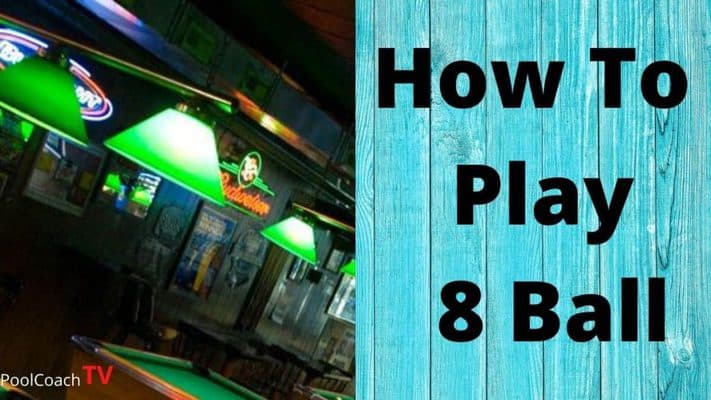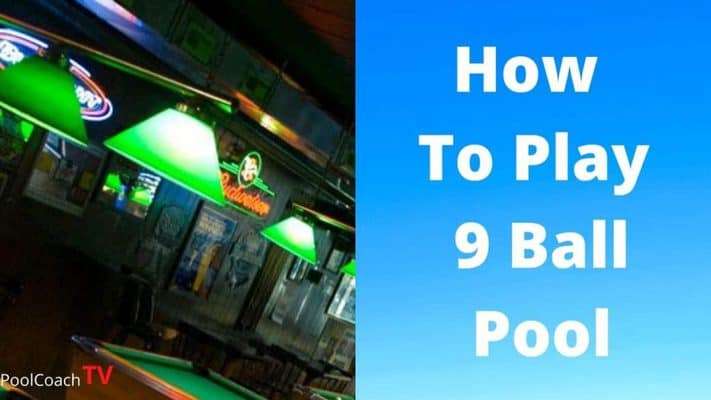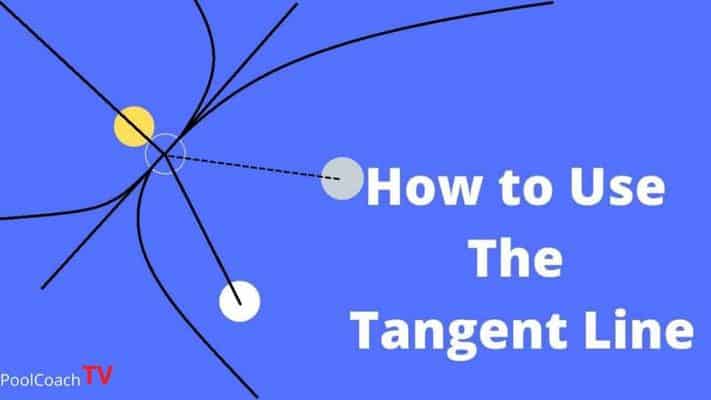Introduction to Cue Ball Control.
Learning how to hit the white ball so that you not only make the object ball but get position on the next ball. I found this to be the most exciting phase of learning to play pool.
I have given some basic help in the article below which will help to move you in the right direction. However, I strongly advise you to just get on a table and just experiment without any pressure. Test things out, some shots will work and others will not, but it doesn’t matter.
It is the best way to find out what works and what doesn’t and you will be teaching your muscle memory as you move along!
How to Control The Cue Ball.
The cue ball is controlled by striking the ball with or without spin at different tip positions, at different speeds and with different strokes. By changing these tip position, stroke and speed, the experienced pool player can move the white ball around the table to the desired location.
This sounds easy to do when it is written down on paper, but after learning to aim and making the balls in the pockets, this is the next most important skill to learn. Even beginners are picking up vital information about cue ball movements as they learn to play.
The Cue Strokes Can Be Placed Into 3 Main Categories:
- Center ball stroke – plain ball hit.
- Stun stroke – stop shot & stun shot.
- Follow through stroke – top spin and back spin shots.
Center Ball Stroke.
Sometimes called the finesse stroke is a plain ball hit just above the horizontal center axis of the cue ball.
The hit is strong enough to move the cue ball forward in a natural rolling motion.
The ball is struck with a soft stroke slightly above the center.
From the player point of view, there is very little opening of the hand on the back swing and no exaggerated follow through. Just enough power to get the cue ball naturally rolling across the table. The power would be up to 4 out of 10. The finesse stroke would be hard enough to move the cue ball 1 1/2 table lengths or less.
Generally the white ball will follow the 30 degree rule when estimating the ball path.
Stun Stroke.
A punchy stroke which will send the cue ball down the tangent line with no spin at impact. The actual angle can be changed to send the cue ball either above or below the 90-degree line. In some cases the stun shot will also be a stop shot depending on the power and direction of the stroke.
The grip for the stun stroke or punch stroke will be a full grip. There is little opening of the back hand except on more powerful shots and over longer distances.
Power could be anywhere from a two, up to eight out of ten.
Top Spin Stroke.
On the top spin shot, the tip of the cue will be above the center axis. The higher the tip strikes the cue ball the more spin will be imparted to the ball and the faster the ball will move.
A follow-through stroke which impacts a forward spin on the cue ball at a greater rotation than plain ball. After impact, the cue ball will over spin and roll forward taking a sharper angle than the rolling ball. The top spin shot often seems to pause a little after impact and then picks up speed as the spin starts to grip on the cloth.
On low to medium power shots the cue ball follows close to the 30 degree rule. On more powerful shots the cue ball can be made to take a more curved track at less of an angle.
The grip should open at the rear in order to keep the cue level on the backswing and through the ball.
Backspin Stroke.
The tip contact point is below the center axis of the cue ball.
Backspin, draw or screw, is a follow-through stroke that imparts backward spin to the cue ball. After impact, the cue ball will stop momentarily before coming back due to the spin.
The backspin stroke can be used at all speeds with a smooth follow through action. The cue is driven through the ball below center at various speeds, probably from 3 t0 8 and different tips heights below center.
The back hand can remain closed or open up to accommodate the longer backswing on power shots
Generally follows the 3 times rule to estimate the path of the ball.
Why Would You Want to Control the White Ball?
The most successful players are the ones who can connect together multiple balls in one visit to the table. For example, breaking the balls at 9 ball and proceeding to make all of the balls in order with your opponent still sat in his chair.
This requires connecting together all of the balls in an easy fashion without difficult shots or “Hail Mary” position. Easy shots and easy positional play take less out of the player mentally.
Conserving mental energy is extremely important in long matches and competition play.
Played this way, the game flows easily from one shot to the other.
Professional players make the game look easy because they are masters of position play and economical with their cue ball movement.
Position Play Principles?
- Don’t play shape if you already have it.
- Accepting what you are given.
- Simple is best.
- Play down the line where possible.
- The correct angle beats being close to the ball.
- Play to your strengths.
Don’t Play Shape If You Already Have It.
This sounds obvious but it requires further explanation.
If you are already in line but further away from the object ball than ideal, just play the shot from there. If you are slightly off the ideal angle but can make the ball from there and get adequate position, just do it.
The idea is that any extra action could cause an error so just take what is already there. Why take the risk of going 30 inches on and off the side rail just to get 12 inches closer to the ball.
Accepting What You Are Given.
Sometimes it is necessary to take what the table gives you. This is especially true after the break when there may be a shot but it is not in prime position.
What this means is that if you are in a workable position already then don’t play unnecessary shots to get closer to the ball. This may mean having to make a more difficult shot from a longer position.
If you get a chance to watch the great Buddy Hall on video, this was one of his secrets to success.
Simple Position Is Best.
Don’t play shots that are unnecessarily complex or just for show. The simple, easy route is usually the best way to get the job done. Simple won’t get the crowd up on their feet cheering and shooting but simple will certainly win more games.
Play Down The Line Shape Where Possible.
Down the line shape gives a play more room for error by having the cue ball reach its position zone by traveling down the shot line. This usually requires the shot to be played off of two rails. Please click here to read more about down the line shape.
The Correct Angle Trumps Close Proximity To The Ball.
Getting in line for the next shot by having the required angle to easily get position on the next ball is more important than being close to the object ball for an easy shot. Take the long shot even though it may be slightly more difficult if the position will be natural.
Always Play To Your Own Strengths.
Don’t let anyone tell you that you should have played a particular shot another way. Play shots in a way that makes the most sense to you as a player.
I came from a snooker background, so when I first started to play pool I did things very differently to most pool players. Over time I have changed a few things, but I still have a few shots that I am more comfortable playing my way.
So long as you follow the general principles it’s ok to use your own shot preferences to achieve similar results.
Staying in Line?
Playing position in such a way that you remain on the correct side of the line. The line is an imaginary straight line between the pocket, the object ball and the rail.
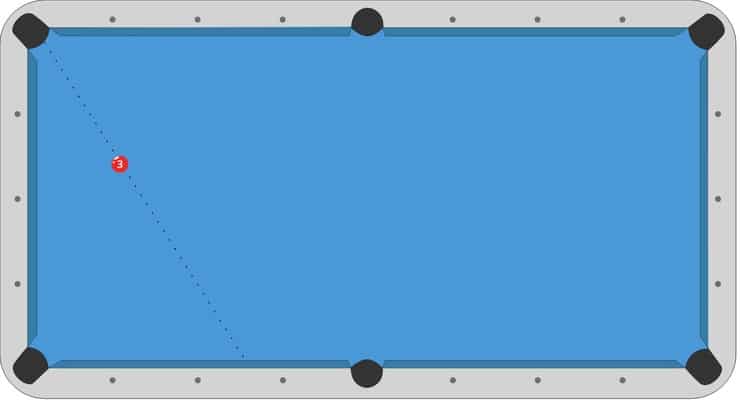
Your cue ball can be to the left or to the right of this line and one side will be considered the correct side and the other side not.
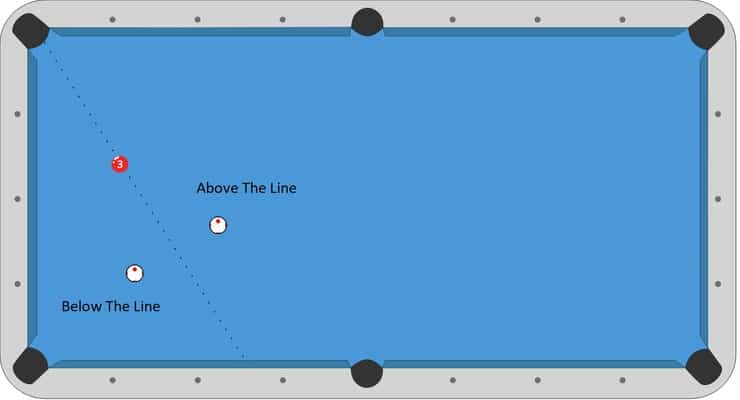
In certain positions, we will also try to be above or below the line.
What Does Playing Shape Mean?
Moving the white ball from one location to another. Having the right position on the 1st ball in order to leave an easy shot on the 2nd ball that will leave an easy shot on the third ball.
This requires always thinking 3 balls ahead at a minimum. I say at a “minimum” because good players can see the whole rack ahead of shooting the 1st ball. However, even great players may have to change plans mid-game if their shots do not work out perfectly.
Always Leave An Angle.
Leave an angle that helps you to move from one shot to another without having to force the position or hit the balls too hard. Having an angle helps players easily move from one end of the table to the other. It is usually best not to be straight in, or too flat on a shot unless it is the last ball.
For instance when you are moving the ball end to end or side to side, use a 1/2 ball or thinner angle. However when the shots are close by in one area you may prefer 3/4 ball or thicker contacts to keep easy control.

